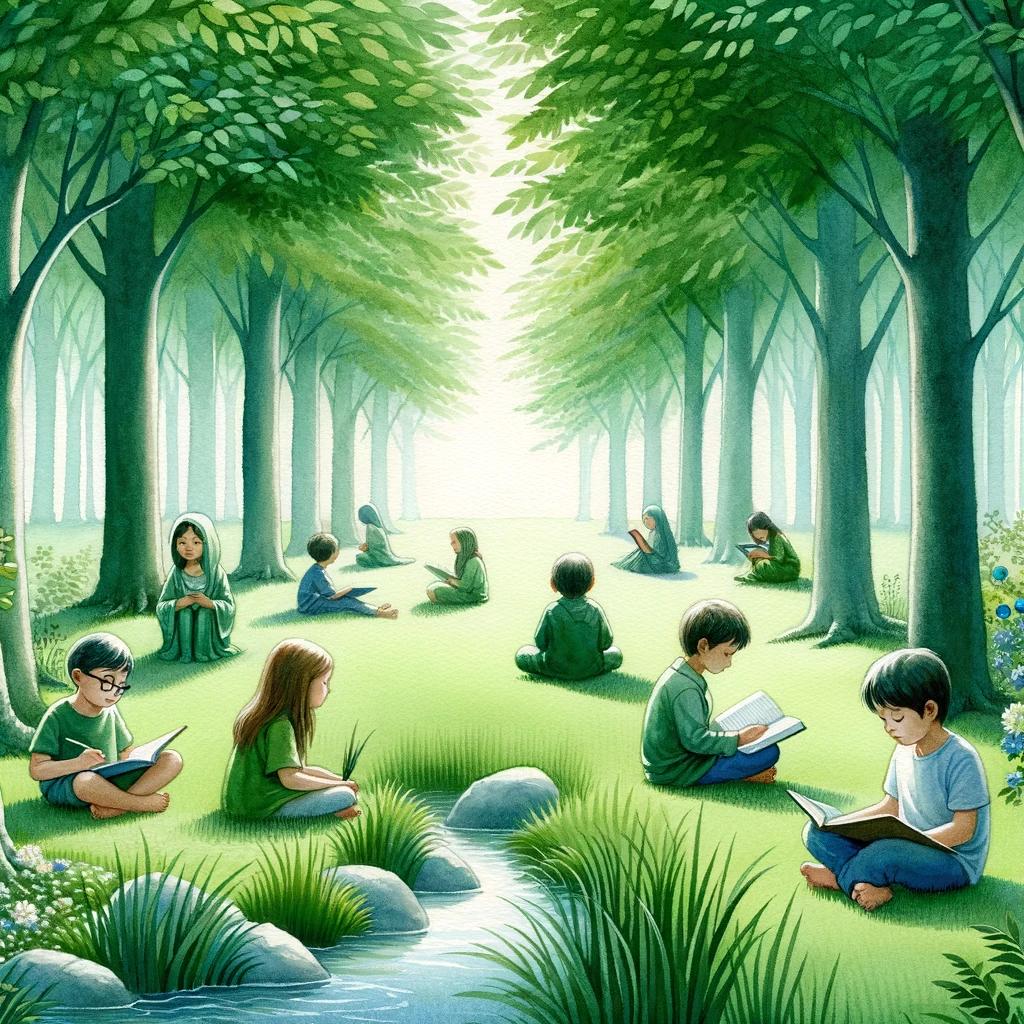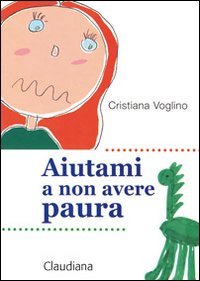
Cristina Voglino: I wrote a book…
Learning from the Wisdom of Children: Reflections on Life and Death Through “Oscar and the Lady in Pink”
Foreword
I have a feeling that, all around us, there is an evolution. It seems to me that we have gone from a period in which we thought about chasing personal, economic, social well-being and to a diametrically opposite one in which the protagonist is illness, the ghost that resides very close to our doorstep. I say this by virtue of a concrete feeling: statements that I often heard in the past such as “That one is lucky: he has everything, including health,” or “Bad luck always strikes the usual people” have today given way to phrases such as “Everyone has his own,” “There is no family that doesn’t have to deal with cancer.”
I wonder what has changed. Perhaps in the crisis our country is experiencing there is a silver lining: everyone is forced to look around a little more, to discover that there are many people struggling, that “there is something for everyone.”
But then I wonder: hasn’t this always been the case? And I wonder again: Do we have to wait until we are in “canvas pants” to be able to notice how others are doing?
We have always known that every day there is a child who will not come home from school, a father or mother who will not come home from work, and if we pause to think that these things can happen to us too, we would never leave home.
Being in touch with the lives of others does not mean thinking that these are things that will happen to us too: it simply means that we are equal to everyone else, we are human beings and as such “finite.”
Today I feel that I am clearer about “what is important and what is not.”
Piece 1 (words 4,296)
It is “normal” for a parent to think that his or her child will one day become a man or woman, master of his or her existence. It is “obvious” to link the idea of illness to old age. Life usually works that way. But if you are in that percentage of parents who have a sick child you know how difficult it is to come to terms with the idea of the future.
My story begins like this: for my daughter, never a symptom; then an electroencephalogram, and an MRI, “Because during the summer, twice ‘two miserable times,’ my daughter had been spellbound, but in a strange way. For no more than five seconds she would tremble, twist her eyes, and then everything would pass.”
And so the diagnosis turns a family’s life, and a little girl’s life, upside down.
“When you learn the news, you are bewildered: the initial one is a dramatic moment, you feel alone in front of diseases with unknown acronyms, you don’t know at all what the doctor is talking about.”
The disease, which five years ago doctors at Regina Margherita in Turin diagnosed my daughter with at the age of seven turns out to be difficult to pronounce: brain cancer. “We felt ‘crashed,’ devastated by the diagnosis. As often happens in brain tumor cases, we parents had not had time to see the symptoms.”
“Not being alone in pain, giving quality to the few moments when you are together, learning to listen to yourself and your children.” The strong bonds created immediately in and out of the hospital facility helped my husband and me not to fall into the abyss of despair. From the health workers to the neurosurgeon, from the hospital teacher to the neuropsychiatrist, to the ASL physiotherapist, an “army” of people experienced the adventure of illness. Knowing me as a theatrical actress and pedagogue, engaged in the training of practitioners and educators, “eventually” she asked me to write that story I never wanted to tell.
The book Help me not to be afraid (ed. Claudiana)

And so I wrote a book: it is one story among many. A true story as there are others. I, this story, never wanted to write it, but the words took on a life of their own, in the dialogue with other parents, in the humanity of the meetings with nurses, doctors, surgeons, hospital teachers, psychologists, neuropsychiatrists, rehabilitation therapists…”
A story that is interwoven with characters, mothers and children. But also of doctors, nurses, kindergarten teachers, parents, volunteers, classmates.
I wrote not to forget, to make sense of what makes no sense. Because a child’s illness has no meaning.
Help Me Not to Be Afraid is a choral book that brings together the experience of men and women who by work or personal history — many compelled by the illness of a child — have had to take the “big leap”: to take charge of grief, process it and follow what the author calls “the very hard but rich path to the pedagogy of courage.”
The title Help me not to be afraid stems from the cry for help uttered by a child suffering from a very serious illness. This phrase, in the story, takes on a cross-cutting value: it applies to the child, it applies to the parent, but it also applies to the doctor.
“I think it’s not right to deny fear. Fortunately, as the years go by, one learns to put in place a number of strategies to control it and sometimes it helps to improve oneself,” says the neurosurgeon who operated on my daughter (who is now 16 years old, has undergone in several surgeries the removal of the tumor, which turned out to be benign, and is living with the aftermath of her illness and with the mourning of her father, who died of cancer six years ‘from that day’).
They say that the pages of the book are pages that should be read with a lot of strength and a lot of courage, but also that the lightness with which I have told everything is the lightness of the children’s way of life.
Every page written I would like it to teach them to look at the “half-full drip.”
Yes, what “ordinary people” call the glass half full, I call it. The half-full IV is a new way of looking at pain. Because that’s what children do: they teach you to reframe it because they teach (or “re-teach”) you to call a spade a spade; they don’t deny illness or even death.
Piece 2 (words 3,293) – The “second life” of parents
In the pages of the book, illustrated by the drawings of children from the Regina Margherita in Turin, I too tried not to hide behind words. I told “the second life” of parents who find themselves next to their sick child: the hospital that becomes the “first” home and eventually risks being a safe oasis against the “normality” outside; the world of complicity that is created with other parents; the “cheering on” each other’s children and the difficulty of finding words for those who have not made it; the different reactions of friends and relatives in the face of illness; but above all the transformation of reality in the magical world of children who manage to create spaces of play and wonder even amidst drains and IVs, MRIs and motor rehabilitation.
“Children are amazing. Even those who knew those were going to be their last days kept preserving their magical world. They teach you that everything is possible. And in that everything there is also death.” “In illness the little ones do not allow you to tell lies. From my daughter I learned that, in grief, it is essential that everyone keeps his or her role: the adult plays the adult and the child plays the child. They ask you to give answers, and if you don’t have them you have to admit it.”
The couple’s relationship also changes. “It would be easier to split up than to be together. One is in the hospital, the other is working; you meet only to give directions on meals, antibiotics, therapy. The couple eventually fades away; you become two parents with child. Men and women react differently. But if you can recover the value of difference, the couple grows. It’s trite to say it, but it’s true: you revise your scale of values, giving much more importance to the beauty of moments, to intimacy made of small things, to glances.”
A number of initiatives have sprung up around the book (www.aiutamianonaverepaura.it): among them the cultural association Antescena, which, among other activities, has supported the theatrical performance of the same name drawn from it, is engaged in “Tic, theater in the ward,” among the beds of children’s hospitals in long-term care wards.
The book has also become a play. The delicacy of the topic and the energy needed to tackle it on stage and is dedicated to children with cancer and all the adults who care for them.
The theater of allows you to get to the message right away. So we emphasize the pedagogy of courage and the concept of resilience-these are the first things you pick up on stage. The word “resilience” comes from physics and shows how all materials have the capacity to withstand an impact force; bringing the concept back to psychology, with respect to illness and death, the important thing is to make it clear that everyone has the resources within them to withstand the impact: it is an anthropological characteristic with which we are all endowed.
Why do we embark on such an adventure? When you live an experience you need to talk about it: it has served me and I long for people to get my urgency to communicate something that has changed and grown me. Making me discover the Pedagogy of Courage title of the book I wrote, after my husband’s death, together with Giovanna Corni and Maria Varano.
Cristina Voglino
